
Rogerio Dos Santos Gomes: A Surprising But Most Pleasant Career Change
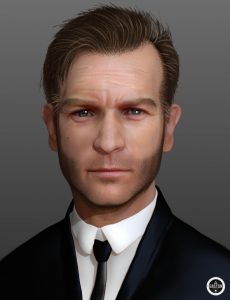 Mr. Rogerio Dos Santos Gomes, 37 years of age is a graduate of Law School at UNESA in Rio de Janeiro, Brazil. He took up Internet Law. However, while working for big portals in Brazil in 2007, he had found himself falling in love with 3D Art. Mr. Gomes surprised himself when he decided to turn creating 3D art as his new path. He then started taking design classes finished his Graduate studies in 3D Art at the CCAA Institute, also in Rio De Janeiro.
Mr. Rogerio Dos Santos Gomes, 37 years of age is a graduate of Law School at UNESA in Rio de Janeiro, Brazil. He took up Internet Law. However, while working for big portals in Brazil in 2007, he had found himself falling in love with 3D Art. Mr. Gomes surprised himself when he decided to turn creating 3D art as his new path. He then started taking design classes finished his Graduate studies in 3D Art at the CCAA Institute, also in Rio De Janeiro.
In his studies, he gravitated to Character Art as a specialization.
It was such a radical career change that in 2014, Mr. Gomes started to take work in some universities as a teacher of 3D art. In 2015, along with some friends, He released the game, “Toren” for PS4 and PC.
Mr. Gomes has considerable work experience through various artistic outlets in Rio de Janeiro such as, Ilha Brasil, Second Life, Swordtales Games, and Pix Studios.
At present, Mr. Gomes is working as an innovation lab coordinator at the UCB University in Rio de Janeiro, Brazil, There he undertakes several projects in many fields of technology such as, 3D Printing, Artificial Intelligence, Internet of Things, Edutainment, Virtual worlds and VR for training and Digital Learning.
Let’s get to know him here and realize that while we may have already thought we planned out our lives well, it might take us to places that will surprise and make us better.
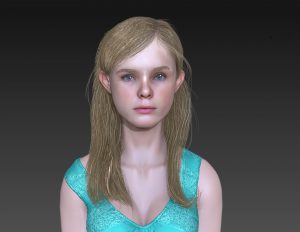 Xeno Creatives (XC): ZBrush technology brought a lot to the industry. What processes did you have to learn to be skilled in it?
Xeno Creatives (XC): ZBrush technology brought a lot to the industry. What processes did you have to learn to be skilled in it?
Rogerio Dos Santos Gomes (RDSG): I started from the basics. With a good understanding of the design foundations you can bring your creations to another level. Silhouette, form, composition, and the color pallete are very important in character creation process. ZBrush helped a lot with it. It is a powerful tool if you want to do things quick and easy.
XC: What are specific ZBrush features do you employ in the production of your art? Has it helped you in improving your art better?
RDSG: Polygroups, aligned panel loops is the best of all. When you discover how quick you can do things only through linking and breaking parts with polygroups, you’ll realize that is a life-saving tool.
I use a lot of slice curve and primary brushes for blocking Move tool and Clay tubes. These can, of course, add realistic surfaces with noise surface.
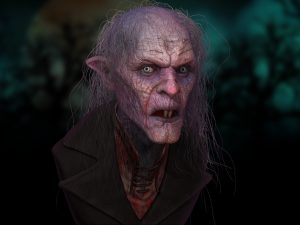 Outside ZBrush, my advice is to get more references as possible. A good understanding of anatomy and proportion is also necessary.
Outside ZBrush, my advice is to get more references as possible. A good understanding of anatomy and proportion is also necessary.
XC: How did you start being involved in the digital craft?
RDSG: In 2007, I worked as a lawyer for a huge news portal involved with a game publisher. I was chosen to help as an evangelist of Second Life Metaverse for the IG Group in Brazil, where I received primary training in 3D modeling. That was when I fell in love with 3D art. I then decided to start a new career as a 3D artist. My initial works were created in Second Life Metaverse.
XC: What do you think is your edge as a 3D artist? What do you think makes you stand out from the rest?
RDSG: 3D Art is among my range of possibilities. It actually helped me in 3D printing, creating shells and cases for my Arduino and Raspberry projects. It also aided in creating characters for my VR simulations, among other things. I believe this is what separates me: I get to innovate my work through delving into different solutions and mastering different platforms.
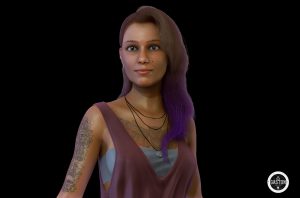 XC: Whom do you do you consider your influence(s)?
XC: Whom do you do you consider your influence(s)?
RDSG: I have some good teachers in my Graduate Studies whom I´m very glad to keep as friends. One of them is Glauco Longhi who works at Santa Monica Studios. He is a very passionate artist and a great person. Other artists who had helped me a lot as a teacher and a friend was Pedro Toledo. He is an Ex-Bioware Character Director, at QC Games. Pedro was my coordinator at CCAA 3D Art for Games in Post-Graduate studies.
XC: So far, what were the challenges that you had encountered working in the 3D industry?
RDSG: I didn´t see it as a challenge. I always look for a good pipeline for my work. When I started modeling, I went back and forth between Max and ZBrush a lot. Now with the new ZBrush features in Hard Surface and Polymodeling I just do it only for a few times for tweaks and fine tuning. So I understand the good practices, then learn new methods, and eventually improve my skills—this is my mantra in 3D Art.
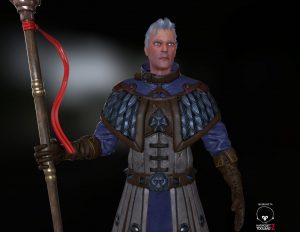 XC: What is your most exciting project to date?
XC: What is your most exciting project to date?
RDSG: Wow! The first one was “Toren”, an Indie game for PS4 and PC made in Unity. The public reception was great and we became a finalist as part of the Indiepub in Design and Art at BGS convention and an honorable mention in the Independent Games Festival.
However, what I consider the biggest one was in the virtual world in Second Life. There, we recreated the Pan-American Games of 2007 on a virtual world with 10 islands for visitation, one measures 655 square meters (7,050.3613 Square feet). These are all interactive and full of information about the event and the sports included in it. From this project, I received one big Publicity Innovation Award in Brazil.
XC: Do you have any advice to aspiring artists?
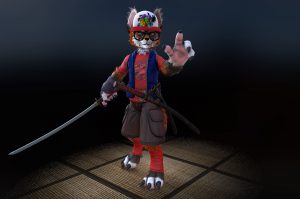 RDSG: 3D art is 80% practice and 20% study. Do not be ashamed to ask for information from whom you consider a good artist. If you live in a country that has little access to information of workshops or big events or you cannot afford expensive courses in the area, forums and YouTube are still potent solutions.
RDSG: 3D art is 80% practice and 20% study. Do not be ashamed to ask for information from whom you consider a good artist. If you live in a country that has little access to information of workshops or big events or you cannot afford expensive courses in the area, forums and YouTube are still potent solutions.
Always believe in your potential; never let anyone get you out of your goals or put you down. The biggest fight really takes place in your head. Do your best in every 3D creation and do not worry about looking for opportunities—let your work do it for you. When you reach the level the industry needs, they will come to you. Act locally, but think globally.
See more of Mr. Rogerio Dos Santos Gomes’s works by clicking here!

